The Best Multitrack Recorder for Sound Production 2024
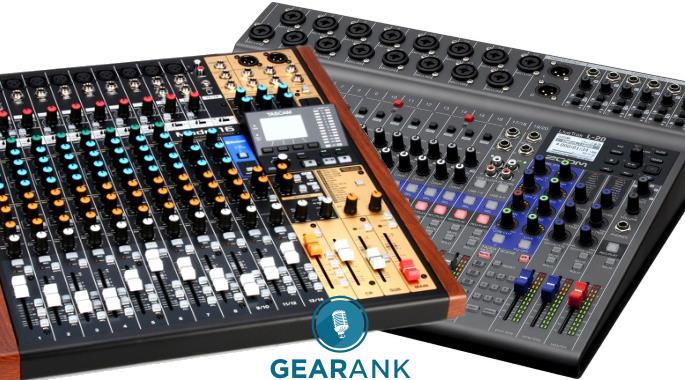
Author & Contributors
Raphael Pulgar
I've been an audio engineer for 20 years specializing in rock and metal recordings. I also play guitar and produce original music for my band and other content creators.
8 to 10 Tracks
TASCAM DP-008EX
Cons
- Slow export speed
- Minor GUI glitches during exporting
- Housing may introduce handling noise to recordings
Pros
- Very good reverb and tone control
- Simple and logically structured menu navigation
- Built-in mics are adequate
The TASCAM DP-008EX is an 8-track digital recorde that can record music or sound on the go. It's easy to carry and can fit in a small bag or pocket. You can power it with four AA batteries, which will last several hours.
This device has eight tracks that you can use to record different sounds at once. It has two microphones built-in that can record sound from all directions. It also has two inputs that you can use to connect external microphones for better sound quality.
Using the TASCAM DP-008EX is very easy. You don't need to be an expert to figure out how to use it. You can only record two sounds at a time, but it's perfect for beginners who want to learn how to record music. You can also use it with a computer to mix and edit your recordings.
The sound quality is excellent, and the built-in microphones work well. You can use external microphones with the device if you need even better sound quality. The batteries last for a long time - about 5 to 7 hours - and you can even use phantom power to power external microphones.
However, exporting your recordings might take a little time, and some features are only available for recording rather than mixing.
Overall, the TASCAM DP-008EX is an excellent choice for people who want to record music or sound while on the go. It's easy to use and has good sound quality.
If you want the best portable multitrack recorder, then this is for you.
Specifications
- Simultaneous recording tracks: 2 stereo or mono tracks
- Tracks playback/mix simultaneously: 8 mono
- Virtual tracks: 8 tracks
- Inputs: 2 x XLR, 1 x 1/4" line, 1 x 1/4" line/DI
- Outputs: 2 x RCA line, 1 x 1/8" stereo headphone
- Sample rate: 44.1kHz
- Bit rate: 16-bit
- On-board effects: 4 types of reverbs (Hall1/2, Room, Studio, Plate1/2), compressor, exciter and de-esser
- Effects send: Internal
- USB audio interface: Multitrack
- Storage medium: Up to 32GB SDHC (2GB SD card included)
- Export tracks to computer: Yes
12 Tracks
Zoom LiveTrak L-12
Cons
- No solo and polarity buttons
Pros
- Full-featured production capabilities
- Great onboard effects
- No-compromise digital mixer functions for live use
Following up on the success of their R series recorders, Zoom released the Livetrak series in 2017 with new features previously unseen on any of their standalone recorder lines.
While the R series is still in production today, the Livetrak series offers an upscale experience and looks more in place in studios. The R series caters more to the "prosumer" market.
It functions threefold as a digital mixer, an audio interface, and a standalone recorder. The Livetrak L-12 is a direct upgrade to the brand's previous R series thanks to its newer preamps and converters.
The onboard effects enable better polish on tracks if used as a primary digital multitrack recording and mixing unit.
Moving onto the cons. The lack of dedicated solo and polarity buttons, standard features on even the most basic mixers, is a critical omission. Both are essential functions for mixing. Filenames are also named similarly and can be confusing when transferring the project to a computer for further mixing.
If you're looking for a jack-of-all-trades multitrack recorder that can help you keep track of rehearsals or live, small-venue events, the Zoom LiveTrak L-12 is a great choice.
Specifications
- Simultaneous recording tracks: 14
- Tracks playback/mix simultaneously: 12. 4 if used as audio interface
- Virtual tracks: 0
- Inputs: 8 x XLR, 2 Stereo 1/4" TRS - Phantom power on 8 channels
- Outputs: 2 x XLR Master Out, 5 x 1/4" TRS Headphone Monitor outs, 2x 1/4" unbalanced LR Monitor out + USB
- Sample rate: 44.1khz, 48khz, 96khz (switchable)
- Bit rate: Up to 24-bit
- On-board effects: 16 onboard effects including delays and reverbs
- Effects send: Internal
- USB audio interface: 14 channels
- Storage medium: USB 2.0
- Export tracks to computer: Yes
| Website | Source | *Rating Value |
| Sound On Sound | Sam Inglis | 94/100 |
Demo
16 Tracks
TASCAM Model 16
Cons
- Has a bit of a learning curve
- Would have been perfect with motorized faders
Pros
- Great routing options
- Hybrid mixing workflow and analog summing a great plus
- Enough inputs for a full band
The Tascam Model 16 expands upon Model 12's features by adding inputs and outputs.
The control room outputs add flexibility for use with larger studios while the additional inputs enable miking up more tracks, especially drums or full band setups.
60mm faders, classic 3 band EQ, inline compression for select channels, and flexible aux and fx routing give a familiar feel for those used to analog mixer workflows. The HDDI Preamps ensure excellent quality captures with low noise.
As with all Model series mixers from Tascam, you can route the audio from your DAW (Digital Audio Workstations) into the mixer and back into the DAW for analog mixing and summing.
The Model 16 strikes a good balance of inputs and portability compared to its 12 and 24 track siblings. One change over model 12 is how the inputs are on top rather than behind. This makes it easier to plug XLR cables in and out.
One thing to note is that there is a steep learning curve, which is expected since it requires people used to digital workflows to adapt to analog workflows and vice versa. Another thing I wish it had is motorized faders so it could function as a full-fledged DAW controller.
The Tascam Model 16 has been gaining more traction as the favored "middle child" of the Model series. Get it if you feel the Model 24 might be too much and the Model 12 might be too restricting.
Specifications
- Simultaneous recording tracks:14
- Tracks playback/mix simultaneously: 8 Mono, 3 stereo
- Virtual tracks: 0
- Inputs:2 x 1/4" (line/Hi-Z), 6 x 1/4" (line), 4 x 1/4" (2 x stereo), 1 x 1/8" (stereo), 1 x Dual RCA Stereo
- Outputs:2 x XLR (main), 2 x 1/4" (control room), 2 x 1/4" (L/R subgroup)
- Sample rate: 48kHz
- Bit rate: 24-bit
- On-board effects: 8 x Channel Compressor, Reverbs, Delay, Chorus, Flanger
- Effects send: Internal
- USB audio interface: Yes
- Storage medium: SD Card Slot, SDHC (4GB-32GB), SDXC (64GB-512GB)
- Export tracks to computer: Yes
| Website | Source | *Rating Value |
| YouTube | Guitar Interactive Magazine | 90/100 |
Demo
20 Tracks
Zoom LiveTrak L-20
Cons
- EQ affects monitor mix
Pros
- Individual monitor mixes great for live performances
- Enough inputs for larger bands
- Solo button added (L-12 does not have it)
The Zoom LiveTrak L-20 is Zoom's flagship Multitrack Recorder / Digital Mixer hybrid. It features functionality more akin to dedicated digital Mixing Consoles while balancing multitrack recorder and mixer functionality.
The L-20 also adds a solo button for each channel- a feature missing on the L-12.
One feature that stands out is the ability to provide six personalized headphone mixes while recording. This is a boon to bands and singers that need individual mixes on their monitors. This makes it an excellent live recording mixer for venues and production studios.
Note that the EQ channel also affects the monitors. Front-of-house (FOH) mixes going out through the monitors is usually a recipe for feedback. There might be trouble in finding a compromise between having a good audience mix and a good monitor mix.
The LiveTrak L-20 is excellent for recording and monitoring live sessions, which are increasingly popular as YouTube content. The linked channel EQ for the FOH and monitor mix may be better for live sound. For your rehearsal space, studio, or radio station, the LiveTrak L-20 is a handy tool for capturing performances.
Specifications
- Simultaneous recording tracks: 22
- Tracks playback/mix simultaneously: 20
- Virtual tracks: 0
- Inputs: 16 x XLR/TRS combo jacks, 2 x Stereo Line in
- Outputs: 2 x XLR Master out, 2 x TRS phone jacks Monitor speaker out, 6 x Headphone monitor mix out, 1 x Headphone out
- Sample rate: 44.1/48/96 kHz
- Bit rate: 16/24-bit, mono/stereo
- On-board effects: 20 Types of Reverb, Delay and Modulation
- Effects send: 2
- USB audio interface: 22 Channels In, 4 Channels out
- Storage medium: SDHC/SDXC
- Export tracks to computer: Yes
| Website | Source | *Rating Value |
| Sound On Sound | Sam Inglis | 90/100 |
Demo
24 Tracks
TASCAM DP-24SD
Cons
- Only one effect at a time per track limits workflow
- Need to bounce to virtual tracks to use more than 1 effect
Pros
- Familiar workflow a nice mix between DAW and digital mixer
- Included effects a good enough substitute for DAW plugins
- Decent amp simulations
The TASCAM DP-24SD is designed to be a standalone audio workstation. While this means that it does not offer any DAW controller or USB audio interface features, the design approach allows you to do all of your music production onboard. Also, it lets you export tracks to your computer via USB.
It also features a complete suite of internal effects, 24-track (simultaneous playback tracks), and 8 takes on virtual tracks ready for compositing.
Going DAW-less usually means leaving behind your VSTs and amp simulations. The Tascam DP-24 has them built in, and they sound decent. The workflow feels like you're working between a mix of a DAW and mixing live music with a digital mixer. Familiarity with both makes the DP-24SD a lot easier to transition to.
One limitation is that you can't simultaneously use more than one dynamic effect on a single track - for example, you can't use the de-esser and compressor or compressor and noise suppression simultaneously on one track. The same applies to time-based effects since you can't have reverb and delay at the same time. You can work around this by utilizing bouncing and virtual tracks, but it would have been better if you didn't have to. Motorized faders would be the icing on the cake but would increase the price.
Overall, this is an excellent all-in-one multitracker/recorder for live performances. It's also good for home studio use. Get it if you want to go DAW-less and enjoy a workflow similar to mixing live with a digital mixer.
Specifications
- Simultaneous recording tracks: 8
- Tracks playback/mix simultaneously: 24
- Virtual tracks: 192 - 8 virtual track per actual track
- Inputs: 8 x Combo XLR/TRS - 1 channel switchable between line and guitar - Phantom power on all 8 inputs
- Outputs: 2 x 1/4" balanced TRS, 2 x RCA unbalanced, 1/4" TRS headphone jack, 1/4" TRS jack for effects send + USB
- Sample rate: 44.1k/48k
- Bit rate: 16/24-bit
- On-board effects: Many including 3-band EQ, reverb, compression, exciter, de-esser, noise suppression, amp models, mastering tools, and more
- Effects send: 2
- USB audio interface: No
- Storage medium: SD/SDHC card - up to 32GB
- Export tracks to computer: Yes via USB
| Website | Source | *Rating Value |
| Sound On Sound | Tom Flint | 80/100 |
Demo / Review
The following review by Andi Picker of the previous model provides an excellent overview of its features and functionality - note that it no longer has a CD burner - you can export to your computer to do that:
32 Tracks
TASCAM DP-32SD
Cons
- Newer recording gear has better optimized workflows
Pros
- Great for larger projects
- Perfect for venues and studios that favor traditional workflows
The TASCAM DP-32SD is designed to be a standalone recording workstation similar to its ancestor, the TASCAM Portastudio Tape recorders. While it does not offer USB recording and DAW control features, it was designed with people used to computerless recording workflows in mind.
The DP-32SD offers a similar experience as recording to tape or early digital recordings where outboard gear is still favored over plugins. So, those familiar with that workflow will feel right at home with the DP-32SD.
However, past the nostalgia and familiarity, it is a slower overall workflow compared to recently released units with a more optimized workflow. Even though the DP-32SD has more available tracks and can handle more extensive projects, the TASCAM Model series is more updated regarding specs and function.
TASCAM's reputation for offering standalone multi track recorders goes back decades. The DP-24SD is a modern take on the old Tascam Portastudios of the past. For artists or performers who require multiple inputs and prefer having the ability to record large projects and mix without using a DAW, the DP-32SD is a perfect choice.
Specifications
- Simultaneous recording tracks: 8
- Tracks playback/mix simultaneously: 32
- Virtual tracks: 256 - 8 virtual track per actual track
- Inputs: 8 x XLR/TRS balanced combo - 1 channel switchable between line and guitar - Phantom power on all 8 inputs
- Outputs: 2x 1/4" balanced TRS, 2 x RCA unbalanced, 1/4" TRS headphone jack, 2x 1/4" unbalanced jack for effects send + USB
- Sample rate: 44.1k/48k
- Bit rate: 16/24-bit
- On-board effects: Many including 3-band EQ, reverb, compression, exciter, de-esser, noise suppression, amp models, mastering tools, and more
- Effects send: 2
- USB audio interface: No
- Storage medium: SD/SDHC card - up to 32GB
- Export tracks to computer: Yes
| Website | Source | *Rating Value |
| Equipboard | _josh_sutton | 100/100 |
| MusicRadar** | Jon Musgrave | 80/100 |
**This review is for the previous version that didn't have an SD card.
Demo
Things to Consider When Buying a Digital Multitrack Recorder
- Take note of the distinction between "Channel" and "Track". Channels refer to your inputs (including the preamps and line inputs) and the accompanying controls (the channel strip). Tracks refer to a recording done in its discrete area on the tape. In the case of digital multitrack recorders, these are your files that are recorded from a specific channel. Over the years, they have been used interchangeably but clarifying the distinction helps to keep you from buying the wrong item. Home studio recorders should have at least 2 tracks, but the more sources you need to record, the channels you'll need.
- When multitrack recording was done on tape machines, you could generally record multiple tracks (on all channels) simultaneously, but it would require a lot of equipment and tape. Digital systems also offer multitrack recording, without requiring a massive amount of equipment. But they are not without limits, the simultaneous recording is limited by the input ports and the processing power of the unit. Make sure the recording system you choose provides enough recording channels for the kind of work you do. A recorder can have 8 simultaneous recording channels but could be capable of recording 16 or more tracks. Make sure you check all the specifications before purchasing.
- If a digital recorder is listed as eight tracks, you can mix a maximum of 8 tracks regardless of how many you can record. Manufacturers list mixing capabilities on the specs, so look closely at this specification.
- Many digital multitrack recorders offer additional virtual tracks, which are very handy because they allow for non-destructive editing. For example, if you have 8 virtual tracks per track, you can do 8 extra takes without 'recording over' previous takes. Alternatively, you might have drums on 8 tracks and bounce them down to 2 tracks to free up tracks for other uses. However, if you need to change that mix later, you'll still have access to the original 8 tracks, which you can reload and remix..
- You won't be able to add plugins, so you'll either want to select one with all the effects you need or one with an external effects send/loop to use additional outboard signal processing.
- You can record on a multitrack recorder and then export your tracks to a computer for additional mixing / editing / processing on a DAW.
- Many models come with additional features such as drum machines or allowing you to use them as a USB audio interface with your computer. Another important feature is built-in stereo microphones for quick yet good-quality recordings.
Channels vs Tracks
Simultaneous Recording Channels
Total Number of Tracks for Mixing
Virtual Tracks
Effects
Export Functions
Additional Features
Which is the Best Budget Multitrack Recorder?
Selecting from the different types of multitrack recorders will need special consideration, especially when working with budget constraints. Since most recorders increase in price, the more inputs you need, you have to consider how many inputs you will use. Music producers working with complex recording process setups will need many more inputs. As a general tip, the best studio recorder to get are those with around 2-4 more inputs than you need. When you have identified how many inputs you need, check our guide, as we have categorized our selections according to the number of inputs and then price.
For small bands that don't need to record simultaneously, the TASCAM DP-008EX is a safe pick with 2 inputs if you don't need it as an audio interface.
Recording multitrack units with fewer inputs requires a different workflow since you won't be able to record your entire ensemble simultaneously. If you need to record multiple sources simultaneously for a band, get one with up to six tracks or more. 12-16 track recorders would be an excellent place to start looking at a slightly higher cost.
Important Note About Digital Multitrack Recorder Memory
Many digital recorders only ship with a 1 or 2 GB SD card installed, and some don't ship with any at all, so you'll probably want to get some bigger SDHC memory cards. They're fairly cheap so you may as well go for the ones with bigger capacities beyond 32GB. You can buy them at a local store or online from Sweetwater.com.
Best Multitrack Recorder Selection Methodology
The first edition was published in 2016. The current edition was published on Feb 22, 2024.
We looked at all multitrack recorders available from major online American music gear retailers, excluding handheld, dedicated podcast and field recorders. We came up with a shortlist of 21 products and entered all of them into our Music Gear Database. We then analyzed forum discussions and reviews by users, owners, and audio engineers and processed that information, which included over 16200 sources, with the Gearank Algorithm to produce the rating scores out of 100 you see above. We selected the highest rated options in each sub-category of track numbers to recommend above. For more information about our methods see How Gearank Works.
About the Author and Contributors
Here are the key people and sources involved in this guide's production - click on linked names for information about their music industry backgrounds.
Lead Author & Researcher
Raphael Pulgar
I've been an audio engineer for 20 years specializing in rock and metal recordings. I also play guitar and produce original music for my band and other content creators.
I'm a big fan of old-school "to tape" recording. Having the option to record without a computer frees up a lot of possibilities especially for live recordings. For permanent setups like bars and venues, having a multitrack recorder that doubles as the house mixer enables you to record live performances to sync up with video footage. A great way to get your venue or event out there since live performances on YouTube tend to get a lot of views. I highly recommend this type of content creation and multitrack recorders make it a lot more convenient to do so.
Contributors
Alden Acosta & Jerome Arcon: Product research.
Jason Horton: Editing and illustrating.
Media
Main/Top Image: Compiled using photographs of the TASCAM Model 16 and Zoom LiveTrak L-20.
All the videos above have been embedded in accordance with YouTube's Terms of Service.
The individual product images were sourced from websites, promotional materials or supporting documentation provided by their respective manufacturers.



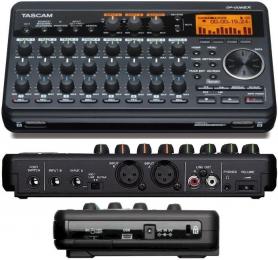
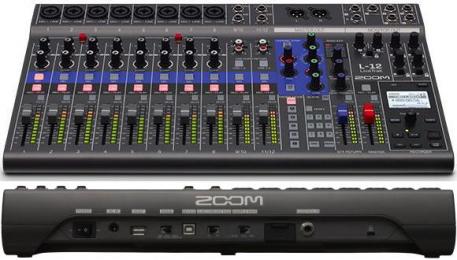
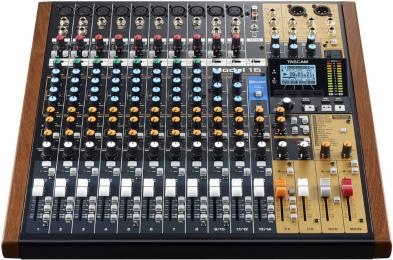
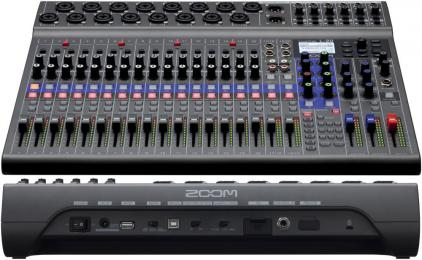
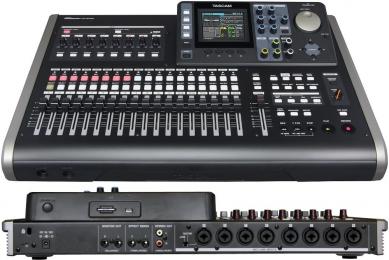
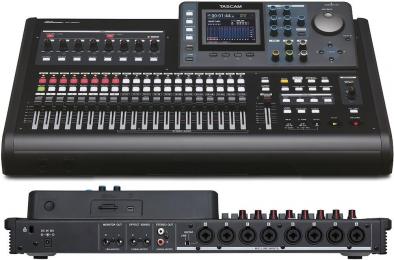
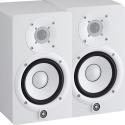
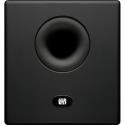
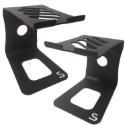

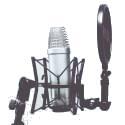

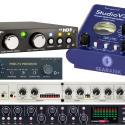
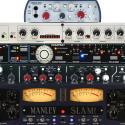
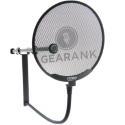
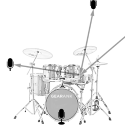





Comments
I got my R16 to record 8
Submitted by Martin C (not verified) on
I got my R16 to record 8 tracks simultaneously into the computer using Reaper.
I've been using the Zoom R16
Submitted by David Hoyte (not verified) on
I've been using the Zoom R16 for awhile, now I need something better.
To record music on.
It's Time for a better way to Record Artist and Bands.
I always thought to be a Recording session Engineer.
It's a fun Job.
Bless you all.
Just a quick correction as it
Submitted by rob (not verified) on
Just a quick correction as it was made me upgrade from the Zoom R16 to the R24 - the latter has SIX phantom powered channels, not four! It should also probably be noted that the bit rate is either 16 or 24 - mostly pertinent because at 24 you can't use the built-in effects features.
I want to note for buyers to
Submitted by Jeff Stockton (not verified) on
I want to note for buyers to be aware the Zoom recorders, either 16 or 24 track recorders do not have the ability to use a footswitch. Therefore for punching in and out is a deal breaker and I chose the Tascam 24 for this reason. Who wants to set auto points everytime to fix a spot? I use punch in tool for writing solos and experimenting so it's an important tool for me.
I had the same issue with my
Submitted by Ed Ham (not verified) on
I had the same issue with my Zoom 24... if there was only ONE thing more I wish it had... it would be a foot-pedal punch in. This mark in/out thing gets old right off the bat. Otherwise it's a great recorder!
Thank you Rob - I have
Submitted by Jason Horton on
Thank you Rob - I have updated the Zoom R24 description to show that it has 6 inputs with phantom power.
According to the R24 manual, the limitation on effects is when using it as an Audio Interface - you can only use the effects in this mode with the sampling rate at 16-bit/44.1 kHz.
Pages